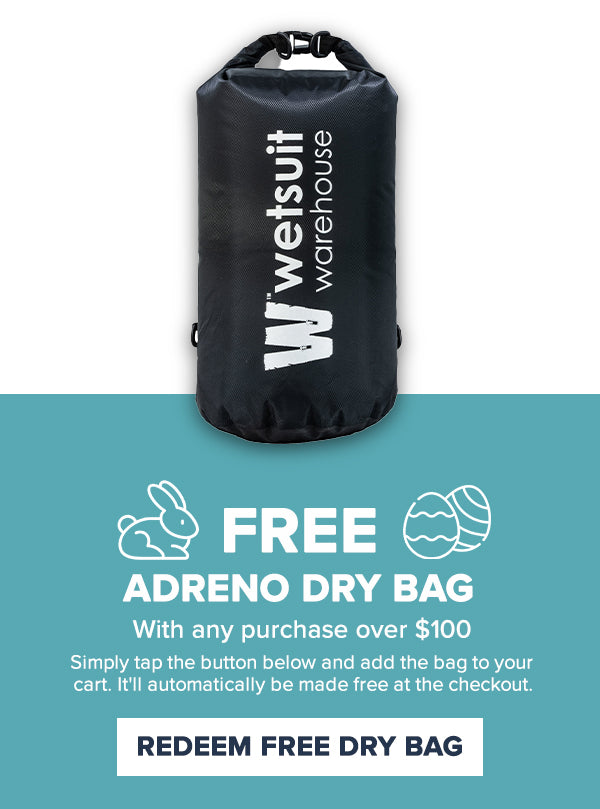Wetsuit Pants FAQ
1. What are wetsuit pants?
Although the most common types of modern wetsuits are one piece, you can still buy wetsuits in sections. Wetsuit pants are the leg sections and are made from neoprene (the same synthetic rubber material one piece wetsuits are made from). Wetsuit pants are available in a number of different sizes, lengths and thicknesses.
2. How do you use wetsuit pants?
Wetsuit pants can be paired with wetsuit vest tops. These can both be made from neoprene and are available in a number of different thicknesses. Many water sports enthusiasts prefer pants and vest combos as they offer greater flexibility and additional freedom of movement for activities such as swimming, wind surfing and wake boarding. Wetsuit pants are also ideal for diving and spear fishing in warmer waters. They provide plenty of freedom of movement but will also protect your legs from minor scrapes and cuts that can be caused by reefs, rocks and underwater debris.
3. What are the benefits of wetsuit pants?
If you want freedom and flexibility when you are in the water then wetsuit pants are a good option. They do not offer quite the same level of heat insulation as one piece suits but they do allow your legs to move freely for sports such as swimming and diving. Wetsuit pants and vest combos are also much easier to put on than one piece wetsuits and you will not have to worry about zipping yourself up.
4. Are there any drawbacks to wetsuit pants?
Wetsuits pants will not be as suitable for cold water conditions as they do not have the same thermal insulating properties as one piece suits. Also if you are pairing them with a vest top they can actually take a bit longer to put on and take off in some cases than one piece suits. If time is important such as in triathlete competitions you may be better off with a one piece wetsuit to keep your transition times down.
5. Can wetsuit pants ease shoulder fatigue?
If you are a serious water sports enthusiast then you may find that one piece wetsuits can cause shoulder fatigue. This happens over longer sessions, particularly when you need to do lots of leg and arm movements such as swimming or paddling surf boards. With two piece wetsuit pants and vest combos you eliminate most of the pulling movement caused by one piece suits. This is because the two separate sections can move independently of each other.
6. Do wetsuit pants improve leg movements when diving?
Wetsuit pants do provide you with a less restrictive movement for your limbs than one piece suits. This means you will not have to adjust your leg movements when you are swimming or diving. If you have a strong leg kick then wetsuit pants can be much more suitable for you and allow your legs to move in a more natural rotating style. However if you have feel the cold easily and are not too worry about your leg kick then you may be better off with a one piece suit. Freedom of movement for your legs will not be so important to you and you will benefit more from the additional heat retention of the one piece suits.
7. Do wetsuit pants reduce chaffing?
If you use your wetsuit frequently you may find that the neck section pulls a lot as you move around, causing chaffing to occur across your shoulders, chest and neck. Wetsuit pants and vest combos can help to reduce this chaffing as the two pieces can move separately from each other. This prevents a lot of the pulling motion across the neck area. You could also try wearing a Lycra or Spandex vest under the neoprene top section of your wetsuit. This will help to prevent the neoprene rubbing on your skin.
8. Can you wear wetsuit pants under a shorty wetsuit?
If you typically swim in warm waters then you may prefer to use a shorty wetsuit as this offers plenty of freedom of movement. However you may not be able to afford to buy a full body wetsuit as well to wear in the winter months. You could buy a pair of wetsuits pants and wear them underneath your shorty for colder water conditions. This will increase the warmth of your shorty suit and provide additional protection for your legs.
9. What is neoprene made from?
Neoprene is a synthetic material made from rubber. It is highly durable and flexibility and can be easily manufactured into a range of different shapes and sizes. Bubbles of nitrogen gas are added to neoprene to make it more buoyant and also to improve heat retention.
10. What thickness wetsuit pants do I need?
This will depend on the water temperature and what you are using the wetsuit pants for. Thicker wetsuit pants are for colder conditions, thinner wetsuit pants are more flexibility and better suited for sports such as swimming and surfing.
If you are just going to be standing around in the water (such as supervising a training class), then you can choose a thicker style wetsuit pant because your main concern will be keeping warm. If you are taking part in an active water sport then you will need to balance thickness and flexibility. 3mm wetsuit pants offer good warmth and freedom of movement and are ideal for most moderate to warm water conditions. If you are in colder conditions you may need to go up to a 5mm or 7mm wetsuit pant.


